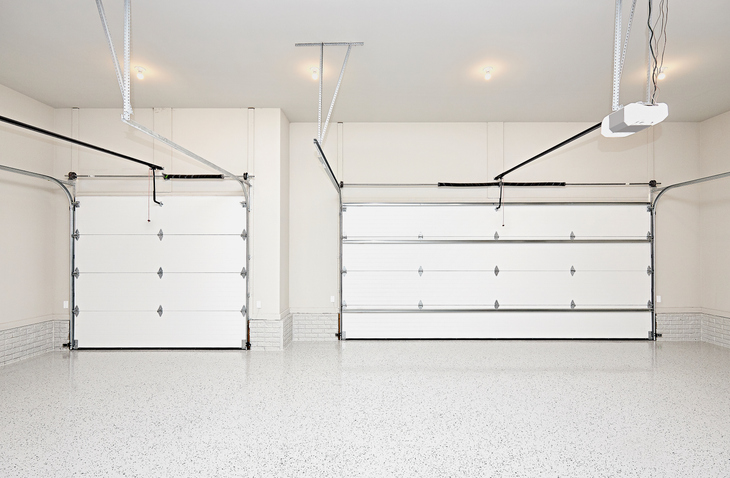As a homeowner, you might have asked yourself, ‘How many watts does a garage door opener use?‘. Understanding the energy usage of your garage door opener is crucial, especially if you’re looking to make your home more energy-efficient. In this comprehensive guide, we will dive deep into the world of garage door openers, examining their power usage, and providing tips on how to manage their energy consumption more effectively.

The Basics of Garage Door Openers and Their Energy Usage
Garage door openers are ubiquitous in modern homes. They offer the convenience of opening and closing your garage door with a simple push of a button. But, how much electricity do they really use? On average, a standard garage door opener uses between 350 to 550 watts when operating. However, this number may vary based on several factors such as the type of motor, the weight of the door, and the duration of use.
Factors Influencing Energy Consumption
- Type of Motor: Different motors, such as AC or DC motors, consume different amounts of energy.
- Weight of the Door: Heavier doors require more power to open and close, thereby increasing energy usage.
- Frequency of Use: The more frequently you use your garage door opener, the more electricity it will consume.
- Standby Power: Even when not in use, garage door openers consume a small amount of power in standby mode.
Types of Garage Door Openers and Their Wattage
There are several types of garage door openers, each with its own energy consumption characteristics. Understanding these can help you choose the most energy-efficient option for your home.
Chain-Drive Openers
Chain-drive openers are the most common type. These use a chain to move the door and generally consume around 500 to 600 watts. While they are reliable and affordable, they tend to be noisy, which might be a concern for some homeowners.
Belt-Drive Openers
Belt-drive openers use a belt instead of a chain to lift the door. They are quieter and typically use around 400 to 500 watts. These are a great option if your garage is attached to your home and you want to minimize noise.
Screw-Drive Openers
Screw-drive openers use a threaded steel rod to move the door. They generally consume around 500 to 550 watts. These openers require less maintenance but are louder than belt-drive openers.
Direct-Drive Openers
Direct-drive openers use a stationary chain in a sturdy steel rail. They are one of the most energy-efficient options, consuming around 300 to 400 watts. They also have fewer moving parts, making them quieter and more durable.
Energy Efficiency Tips for Your Garage Door Opener
By following some energy efficiency tips, you can make sure you are getting the most out of your garage door opener without wasting electricity.
Regular Maintenance
Regular maintenance ensures that all parts of the garage door opener are working efficiently. Lubricating moving parts and checking for wear and tear can help reduce the energy consumption. For more information on maintenance, visit this article on the importance of regular garage door maintenance.
Unplug When Not in Use
If you are going on vacation or wont be using the garage door for an extended period, consider unplugging the opener. This can help save the energy consumed in standby mode.
Choose Energy-Efficient Models
Opt for garage door openers that have been designed with energy efficiency in mind. Look for models with a low standby wattage and efficient motor design.
Use LED Bulbs
Many garage door openers come with integrated lights. Replacing these bulbs with LED lights can result in considerable energy savings over time.
RELATED LINKS
For more insights into garage door maintenance, you can also visit this article on why your garage door won’t go up or explore common garage door problems.
Environmental Impact
While the energy consumption of a single garage door opener might seem insignificant, it adds up when you consider the millions of garage doors in use. By choosing energy-efficient models and maintaining them properly, you can contribute to reducing carbon emissions and promoting environmental sustainability.
For more tips on eco-friendly home improvements, you can visit the FEMA US Fire Administration website.
Conclusion
Understandin g how many watts a garage door opener uses is a step towards making informed decisions for your home. By choosing energy-efficient models and following best practices for maintenance, you can ensure that your garage door opener operates efficiently, saving you money and reducing your environmental footprint.
g how many watts a garage door opener uses is a step towards making informed decisions for your home. By choosing energy-efficient models and following best practices for maintenance, you can ensure that your garage door opener operates efficiently, saving you money and reducing your environmental footprint.
FAQs
How can I reduce the energy consumption of my garage door opener?
Regular maintenance, using LED bulbs, and choosing energy-efficient models can help reduce the energy consumption of your garage door opener.
What is the average wattage of a garage door opener?
The average wattage of a garage door opener ranges between 350 to 550 watts, depending on the type and frequency of use.
Should I unplug my garage door opener when not in use?
If you are not using your garage door opener for an extended period, unplugging it can help save energy consumed in standby mode.
For more information on maintaining and troubleshooting your garage door, check out this resource on how to program your garage door opener.










